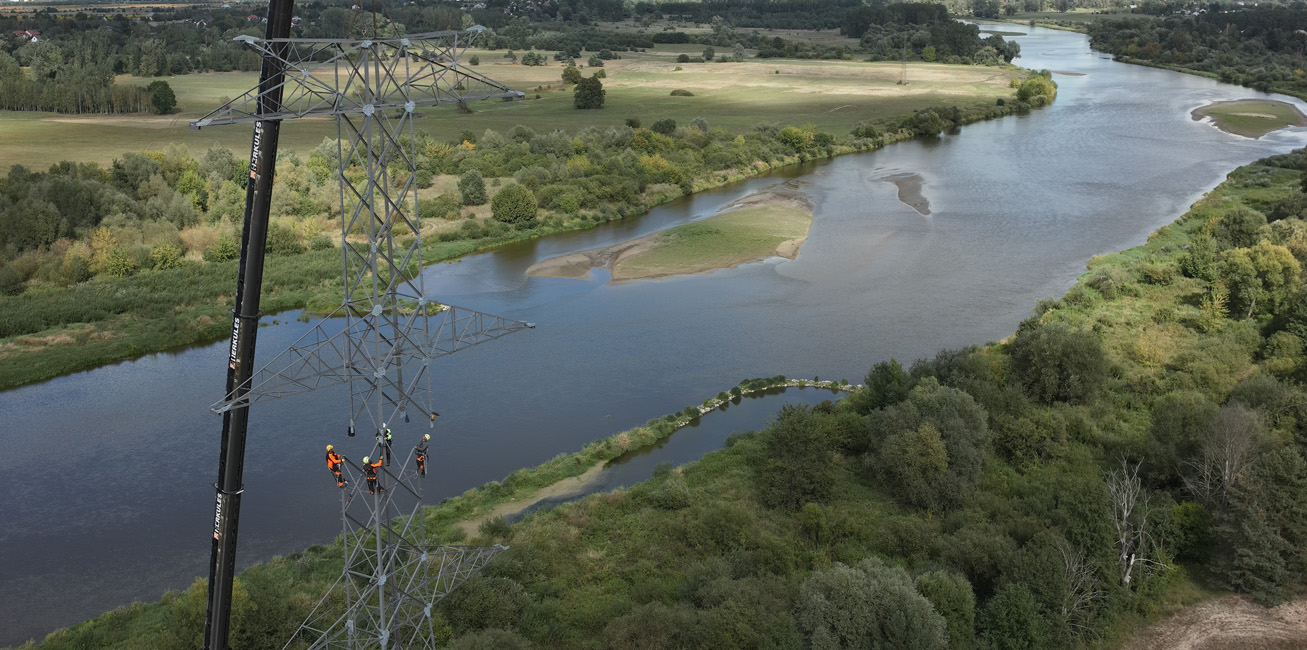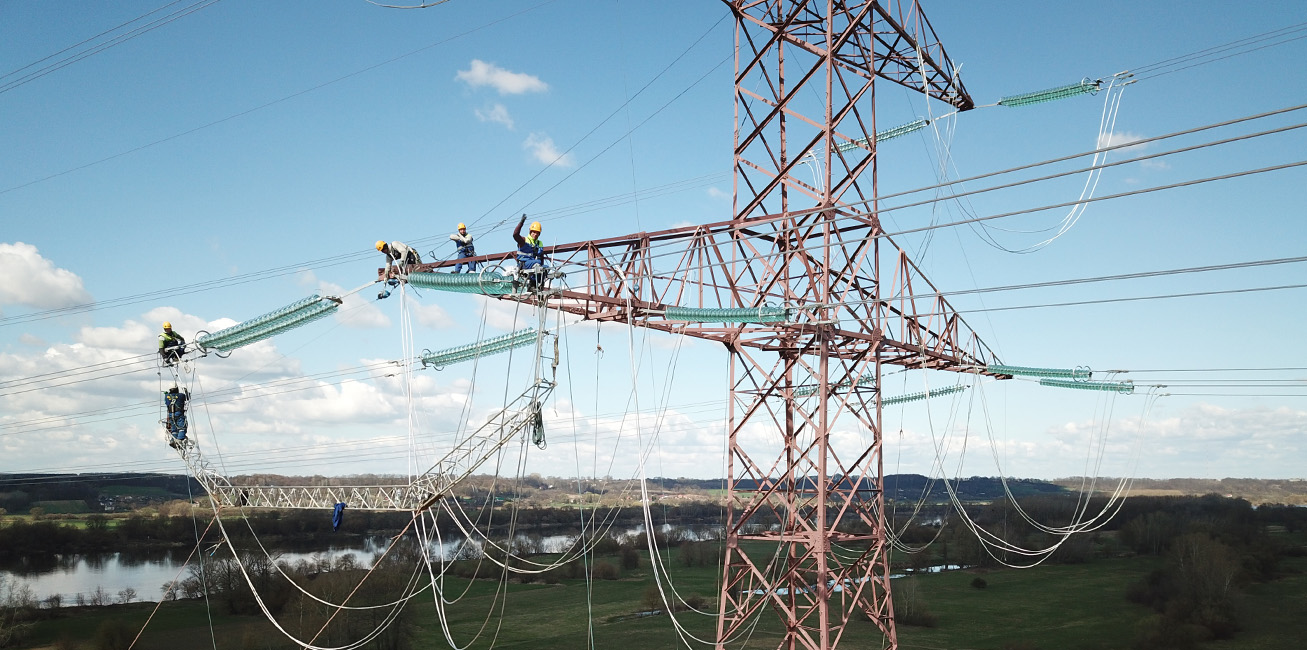Examples of priority investments implemented under investment programmes
Priority 1 investment projects are implemented under the following investment programmes:
Strategic Programme 1 ─ "Power output system from Kozienice Power Plant and improvement of power supply conditions in north-eastern Poland"
The objective of implementing the investment projects included in Programme 1 is to ensure reliable power output from Kozienice Power Plant following its extension with a new 1,000 MW power unit and to improve the reliability of power supply in the northern and north-eastern parts of the Polish Power System and Warsaw agglomeration.
Strategic Programme 2 ─ "Power output system from Turów Power Plant and improvement of power supply conditions in south-western Poland"
The objective of implementing the investment projects included in Programme 2 is to ensure reliable power output from Turów Power Plant following its extension with a new 480 MW power unit and to improve the reliability of power supply in the south-western part of the Polish Power System, specifically for the largest recipient in this area – Kombinat Górniczo-Hutniczy Miedzi (KGHM). The investment projects included in Programme 2 also have a significant impact on the possibility of energy transmission and power supply in the northern areas of the country and on the possibilities of cross-border exchange in the synchronous section (connections between Poland and Germany, the Czech Republic and Slovakia), especially in the import direction.
Strategic Programme 3 ─ "Power output system from Dolna Odra Power Plant and RES and improvement of power supply conditions in north-western Poland"
The objective of implementing the investment projects included in Programme 3 is to ensure reliable power output from Dolna Odra Power Plant as well as from the wind farms and photovoltaic sources existing or planned in the northern part of the country and to improve the reliability of power supply in the north-western part of the Polish Power System. The investment projects included in Programme 3 also have a significant impact on the possibility of cross-border exchange in the synchronous section (connections between Poland and Germany, the Czech Republic and Slovakia), especially in the import direction. .
Strategic Programme 4 – "Power output system from RES and improvement of power supply conditions in northern Poland – eastern part"
The objective of implementing the investment projects included in Programme 4 is to ensure reliable power output from wind farms located in the northern part of the country, to improve the reliability of power supply in the northern part of the Polish Power System and to ensure the possibility of cross-border exchange with the Swedish and, in the future, Lithuanian power systems.
Strategic Programme 5 ─ "Power output system from Bełchatów Power Plant and improvement of power supply conditions in central, eastern and north-western Poland"
The objective of implementing the investment projects included in Programme 5 is to ensure reliable power output from Bełchatów Power Plant and to improve the reliability of power supply in the central, eastern and north-western parts of the Polish Power System, including Łódź and Szczecin agglomerations. The investment projects included in Programme 5 also have a significant impact on improving the reliability of telecommunications and communications infrastructure. Some of these investment projects are local in nature and are primarily related to the expansion and modernisation of the existing network assets.
Area Programme 7 ─ "South"
The purpose of implementing the investment projects included in Programme 7 is to ensure the reliability of the transmission grid operation in the southern part of Poland located below the conventional Warsaw–Poznań line. These are both investments of a local nature, which are related primarily to the expansion and modernisation of the existing network assets, and larger investments related to the construction of new 400 kV lines in the north-south direction.
Strategic Programme 9 – "Building submarine connections and energy storage facilities"
The objective of implementing the investment projects included in Programme 9 is to ensure the reliability of the operation of the transmission grid and to enable the synchronisation of Baltic countries with continental Europe.
Area Programme 10 ─ "Investor deliveries"
The objective of implementing the projects included in the Programme 10 is to ensure investor's deliveries of autotransformers and reactors for implemented network investments as well as deliveries of selected equipment and instrumentation for investment projects and operating tasks.
These projects – with regard to the supply of circuit breakers, disconnecting switches, busbar protection, feeder protection, transformers, phase conductors, cable lines and systems, low voltage surge arrester, MTS and SSiN (Control and Monitoring System) circuit-breaker modules – are intended to optimize the Company's purchasing processes and reduce investment and operating expenses by achieving the economies of scale.
Strategic Programme 11 – "Power output system from RES and improvement of power supply conditions in northern Poland – western part"
The objective of implementing the projects included in Programme 11 is to ensure reliable power output from wind farms and photovoltaic sources existing or planned in the northern part of the country on the western side and to improve the reliability of power supply to areas in the north-western part of the NPS.

